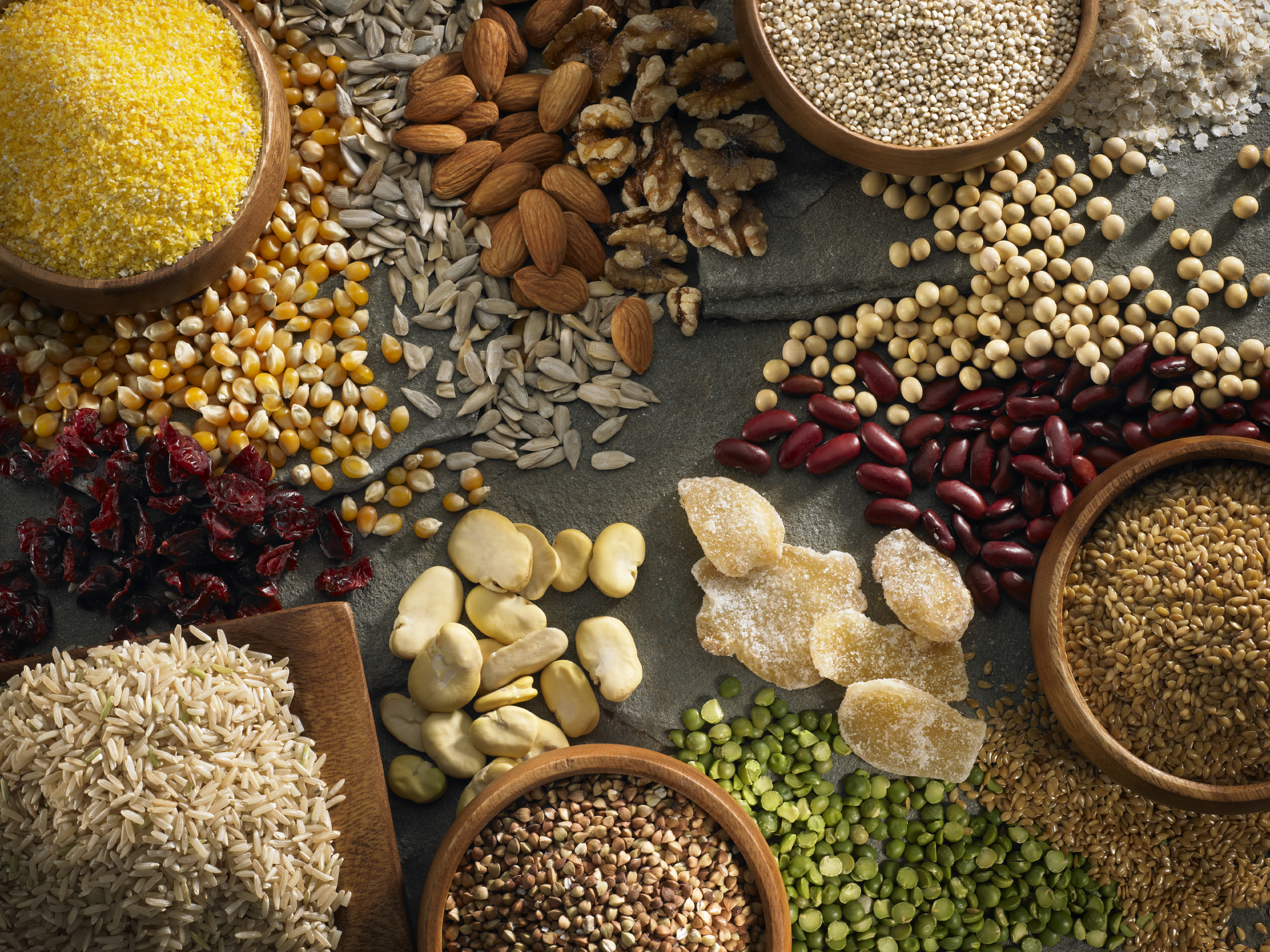Share This
Inside each little whole grain kernel are countless plant compounds. Some are old friends, like fiber or protein, and some we are just getting acquainted with. One plant compound that is experiencing somewhat of an identity crisis is in the nutrition media is phytic acid.
Phytates (the term for phytic acid when bound to a mineral) are bioactive compounds that are found naturally in nearly all plant foods. Phytates are sometimes referred to as “anti-nutrients” because they can bind some minerals and make them less available to your body. That said, the quantity of nutrients that your body can absorb from food varies widely depending on what other foods you’re pairing it with, how it’s cooked, and what your overall diet is like.
Additionally, regularly eating a diet high in phytates may limit this “anti-nutrient” effect. In a 2015 study in the Journal of Nutrition, scientists in Iowa assigned 28 non-anemic young women to either a high phytate (lots of whole grains, beans, nuts, and tofu) or low phytate (refined grains, eggs, and cheese, avoiding high phytate foods) diet for eight weeks, then tested their iron levels. After consuming a high phytate diet for 8 weeks, there was a 41% increase in serum iron response, indicating that the women were better able to absorb iron. This suggests that “habitual consumption of [a high phytate] diet can reduce the negative effect of phytate on non-heme iron absorption among young women with sub-optimal iron stores.”
Avoiding phytates would mean not just avoiding foods like whole grains or beans but subsisting on a diet of mostly synthetic foods or animal foods, not exactly a recipe for good health and wellbeing. Since phytates are found naturally in plants, it’s not surprising to learn that they may also have some antioxidant and anti-cancer properties.
Nonetheless, phytate fears linger throughout various pockets of the internet, prompting some to opt for sprouted grains. Sprouting (by soaking) may be able to reduce the phytic acid level in many grains, although the percentage varies by grain type and time of sprouting. Sprouting grains also appears to improve the bioavailability of certain nutrients, but the science is too young to make generalizations, and we still have more to learn. Most evidence alleging that soaked or sprouted grains are “easier to digest” is largely anecdotal.
From a culinary perspective, there are perks that come with giving certain grains an overnight soak. Acclaimed cookbook author Maria Speck writes that “Slow-cooking whole grains such as rye and wheat berries benefit from soaking, for two reasons. As a rule of thumb, soaking decreases their cooking time and makes, in my opinion, for plumper, more appealing and tender kernels.”
Phytates are just one tool in a grain’s arsenal to give it energy to blossom into a healthy plant, working in concert with (rather than in competition with) a full spectrum of other nutrients and phytochemicals. In humans too, the benefits appear to far outweigh any potential nutrient shortfalls. You don’t have to have a molecular chemistry background to piece together a healthy diet. Treat yourself to the rich flavors of whole grains and other wholesome foods, like fruits, vegetables, nuts, and beans, and the health benefits will just be an added bonus. (Kelly)


Add a Comment